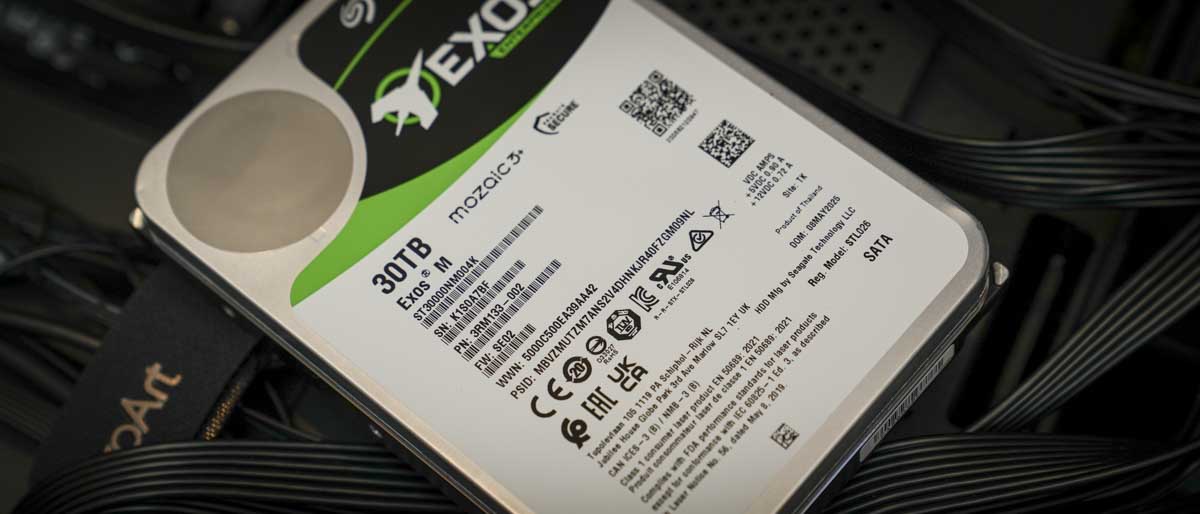TechRadar Verdict
The Exos Mozaic+ M has been designed for enterprise and large-scale environments where maximum reliability is required. In my benchmarking tests conducted on an ASUS Prime Z890-P and Intel Core Ultra 7 machine, the huge capacity proved to be an ideal solution for archiving footage and setting up a soft RAID. It's well-priced and extremely reliable as an integrated storage solution for desktop PCs and larger NAS and server-based solutions.
Pros
- +
Huge capacity
- +
Excellent reliability
- +
Consistent performance
Cons
- -
Enterprise-level technology
- -
30 TB of data will be a lot to lose in isolation
- -
Used as intended, it is expensive
Why you can trust TechRadar
Seagate Exos Mozaic+ M 30TB: 30-second review
The Seagate Exos M is squarely aimed at enterprise, hyper-scale environments, such as cloud providers, AI data clusters, or large backup systems, where huge amounts of data capacity are required. In this review, I've taken a look at the drive in isolation and installed it in an ASUS Prime Z890-P and Intel Core Ultra 7 desktop workstation designed for creative use, specifically for editing video and images. In this scenario, I used the drive as an archival solution for footage rather than using an external NAS that I usually rely on, although I also have two 8 TB HDD installed in a RAID 1.
Getting started with this huge capacity drive is exactly the same as any other: simply plug it into your power supply, then connect the cable to your motherboard. Plug and switch the machin on and go through the Windows 11 Disk Management application, and you'll see the unformatted drive appear, ready for use. In this case, I'm just using it on its own so I can format it in NTFS and make the disk usable for the test.
Once the drive has been formatted, it's accessible in exactly the same way as any other drive installed in your system. At this point, if I were going to use this full-time, I would definitely purchase two so I could set them up in RAID 1 to ensure redundancy in case one fails. However, as this is a review I'll be running it in isolation and solidly for over a week, and as it's designed to run 24/7, I left some of the benchmarking tests running for several days to test the integrity of the drive. This will also be a great test for my machine.
While I've become used to the speed of the latest NVMe SSDs, falling back on a traditional HDD and that drop in speed of transfer can really be seen, topping out at close to 300 MB/s. However, as this drive isn't going to be used as a working drive and is purely archival, the data transfer rate is still better than when I transfer over to my NAS, and therefore, archiving directly to a drive within the workstation is a far faster process. Something that I do as a tempory back-up as a matter of course, when editing video.
I used the drive with Adobe Photoshop, Lightroom, Adobe Premiere Pro, and DaVinci Resolve for archiving files. It's apparent that the drive is exceptionally reliable and fast considering its capacity and having that stored within my workstation rather than on an external device has made me rethink using external systems. Realistically, I can get a very decent and reliable RAID setup within my workstation, offering a huge 30 TB of data in a much neater and tidier environment.
Seagate Exos Mozaic+ M 30TB: Price and availability
- How much does it cost? $618
- When is it out? Now
- Where can you get it? Widely available
As this drive is made by Seagate, one of the largest storage manufacturers, it is widely available either as an individual unit or as multiples. It can also be bought through many B2B suppliers and, of course, through Amazon.
- Value: 5 / 5
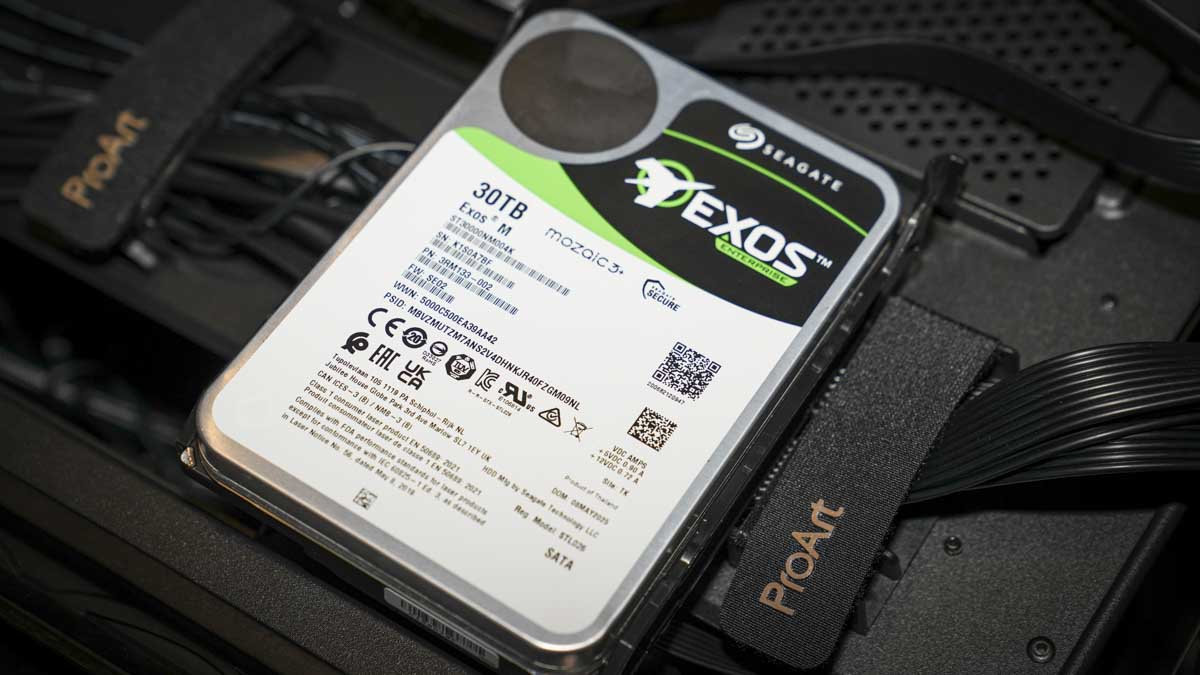
Seagate Exos Mozaic+ M 30TB: Design
Capacity options: 30, 32 and 36TB
Form factor: 3.5-inch
Interface: SATA III
Recording technology: Conventional Magnetic Recording (CMR)
Platform: Heat-Assisted Magnetic Recording (HAMR)
There are three different ranges within the Exos series, including the X, E and M series, that I'm looking at in this review. The difference between each really comes down to their maximum capacities and the build technology, with the E series having a maximum capacity of just 10 TB and typically being aimed as a budget enterprise system, the X going up to 24 TB and featuring a more involved technological build to help reduce wear, and designed for both data centres and NAS, and the M that I'm looking at in this review, with a maximum capacity of 36 TB.
Sign up to the TechRadar Pro newsletter to get all the top news, opinion, features and guidance your business needs to succeed!
As the drive is a standard 3.5-inch, it has been designed to fit into most desktop machines as well as NAS and servers so that wide compatibility is assured, and these are pretty much standardised.
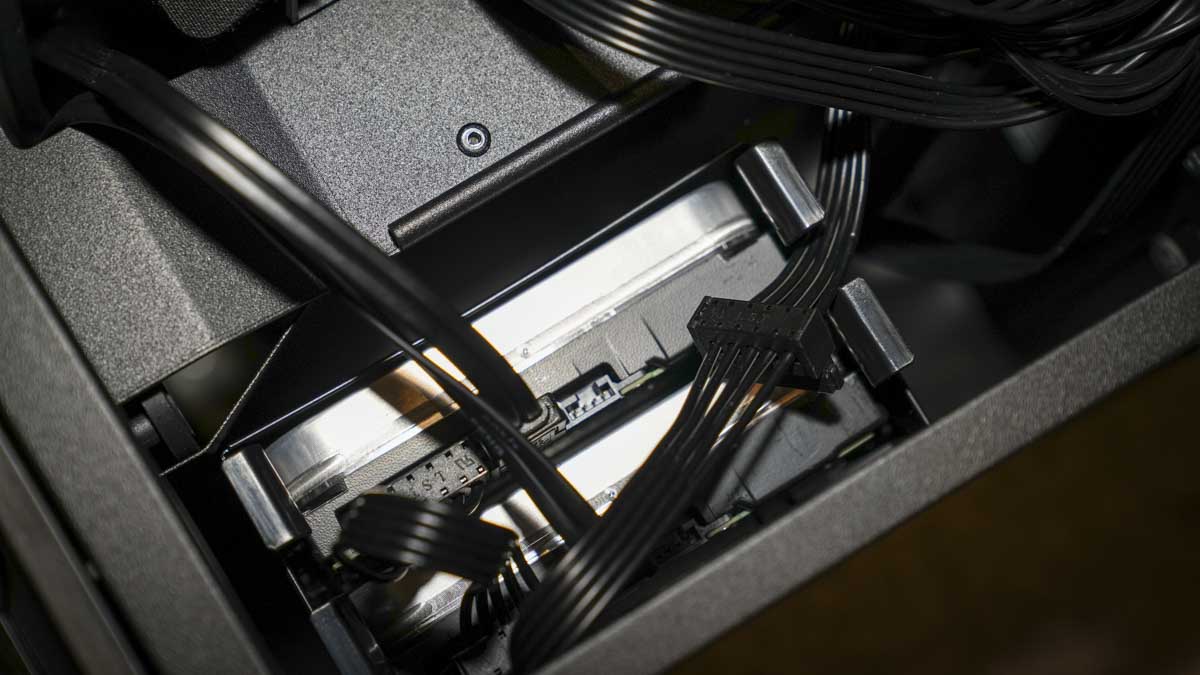
When it comes to the data and power connection, these are all standardised, with the SATA III interface being 6 GB/s, using a standard 7-pin SATA data cable. It's also hot pluggable in AHCI mode. For input, it just requires the typical 15-pin SATA power plug. They connect directly to your power supply, so actually installing them into the system is extremely quick and easy, and it features all the usual screw holes so you can secure it in place.
- Design: 4.5 / 5
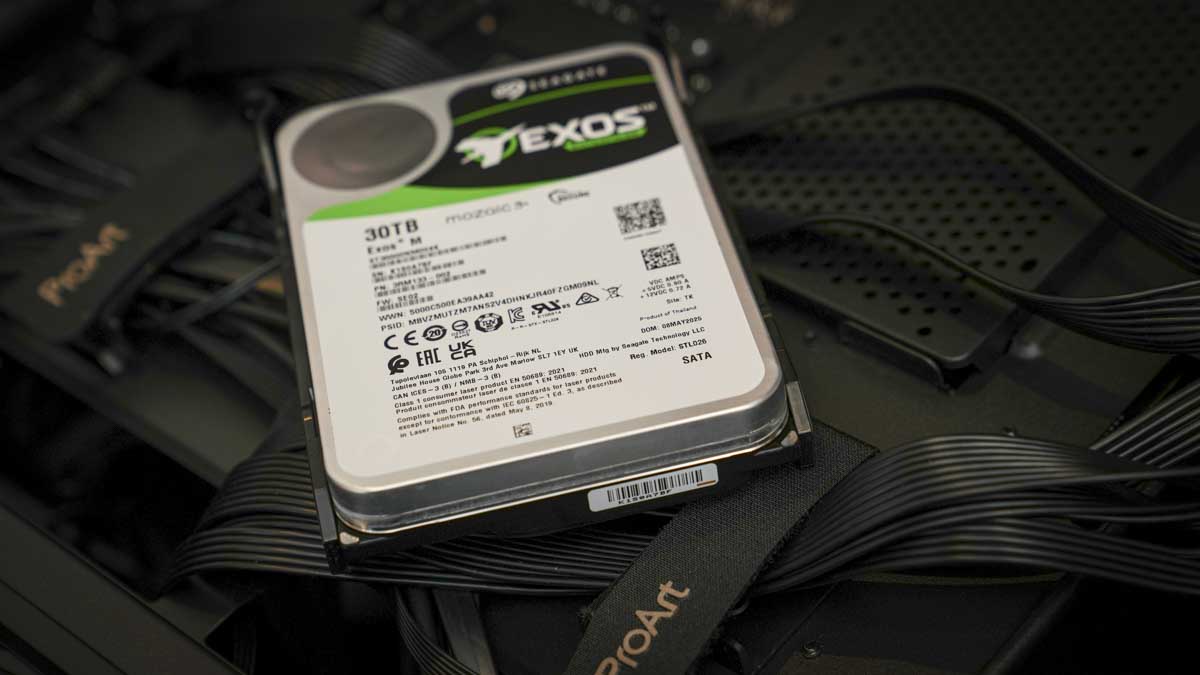
Seagate Exos Mozaic+ M 30TB: Features
While hard drives have been around for many years and have been a staple for large-scale storage, even in the event of NVMe SSDs becoming mainstream for most desktop PCs, the likes of the Mozaic+ Exos M offer something well beyond the latest technology. While the transfer speed might seem relatively limited, the main reason for going for such a large capacity drive is, of course, storage. Here, Seagate has really worked at enhancing the technology, mainly that reliability. With three different capacities available, the 30 TB I'm reviewing, 32 and 36 TB, there's plenty of choice. When you have the other two ranges in the Exos series, which might be more affordable, you'll certainly find something that should fit your price bracket.
Even by HDD standards, 30 to 36 TB of data is a huge amount for a single drive, and this is made possible due to the breakthrough Areal density and HAMR (Heat Assisted Magnetic Recording), which enables 3 TB per platter and makes it a great option for many of the new AI-driven data centres. If you're a small to medium-sized business and looking for large-scale backup, then the reliability of these drives is definitely going to be of interest. When coupled with the huge capacity and price point of these drives, they become even more appealing, enabling mass storage on a very small scale. While the drives offer huge capacity, they are also some of the most efficient drives on the market, and Seagate states they're about three times more power efficient per terabyte than typical drives of this type.
When it come to the technology used Seagate has invested in the development of storage media, this includes the Superlattice Platinum-Alloy Media that offers a higher magnetic coercivity making the high storage density possible. There's also a news plasmonic writer that heats that material quickly at 800º Fahrenheit, which then cools again in less than two nanoseconds. While there has been some debate about this technology, through the test it proved to be reliable.
When it comes to reasding the data it uses a Gen 7 Spintronic Reader which features complex technology to read from those high density platters and enables the transfer rates that I recorded through the benchmarking tests.
Of course, with this capacity, reliability is a huge issue, especially if you're going to be using this drive in isolation. Here, Seagate reassures enterprise-class reliability, and, after all, these drives have been designed for enterprise and business, where Seagate's reputation has been trusted for many years.
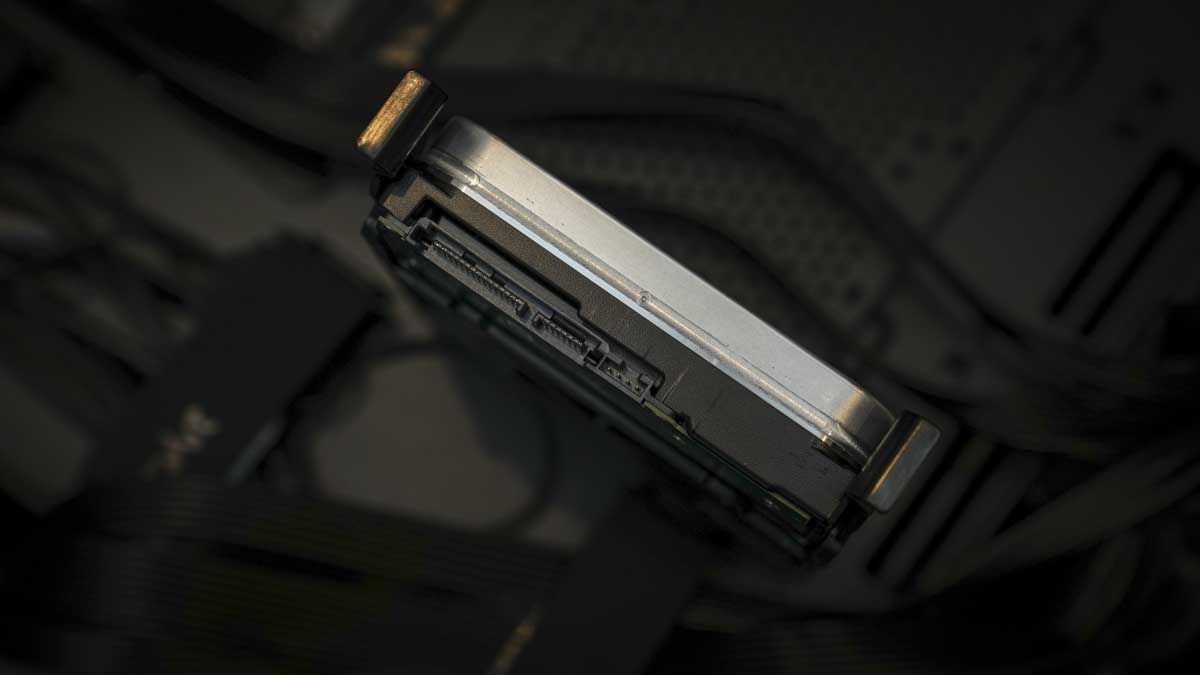
- Features: 4.5 / 5
Seagate Exos Mozaic+ M 30TB: Performance
Tested on an ASUS Prime z890-p motherboard
Crystal Disk Mark Read: 291.47 MB/s
Crystal Disk Mark Write: 283.16 MB/s
AJA System Test Lite Read: 262 MB/s
AJA System Test Lite Write: 229 MB/s
AS SSD Benchmark Read: 275.82 MB/s
AS SSD Benchmark Write: 214.04 MB/s
ATTO Disk Benchmark Read: 274.68 MB/s
ATTO Disk Benchmark Write: 257.81 MB/s
Getting started with the Exos Mozaic+ is exactly the same as you'd expect with any standard HDD: simply install it, plug in the SATA and power connectors, power on your PC, then go into Disk Manager and format the disk with the file system you require. The whole process takes no more than five minutes.
However, the design of this disk is not really to be used in isolation but rather as part of a larger system. On a smaller scale, in a large capacity NAS, it could be a perfect solution for any home office, freelancer, or small business. Essentially, you have enterprise-grade HDDs perfect for configuring in a RAID setup for mass storage all your company's data. The fact that each drive is of the standard 3.5-inch form factor and will fit any standard drive bay adds to the versatility and compatibility.
Once in place, you can then set up whichever backup software you use or configure your machine to back up to the 30 TB drive and then out to an online backup service such as Backblaze.
Through the test, the drive performed well, reaching almost 300 MB/s read speed in almost every test, and likewise not too far behind on the write speed, which actually means you could potentially utilise this as a working drive for many applications that don't require fast transfer rates.
When I tested it out with Photoshop and Lightroom, showing 300 MB/s works relatively well and means you can have your libraries stored securely onto this archival drive and be able to quickly navigate and select images much faster than you would through a NAS system.
When it came to bulk backups, getting the whole machine and my external drive configured to back up directly to the 30 TB drive was fast and easy enough using Acronis True Image. Likewise, getting that 30 TB drive backed up to Backblaze was a simple step, although the upload process is ongoing.
When it came to overall performance at 30 TB, there is very little that I can fault about the drive. With a drive like this, it's more about the longevity rather than the speed. It can't be expected to keep up with the demands of the fastest SSDs, but it also remains close to 100% reliable.
In my test, it worked without a glitch, and even when running benchmarking tests for three days solid, there was no letdown in the speed of the drive, highlighting that, at least in the short term, it was as reliable as you can get.
- Performance: 5 / 5
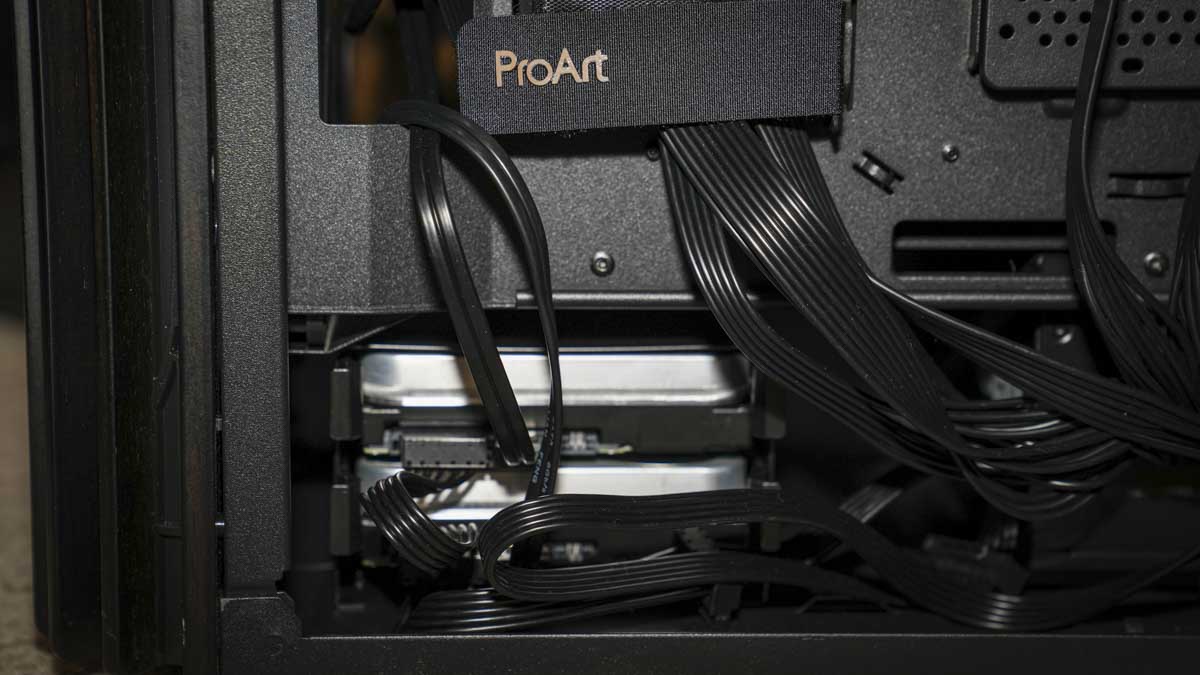
Seagate Exos Mozaic+ M 30TB: Final verdict
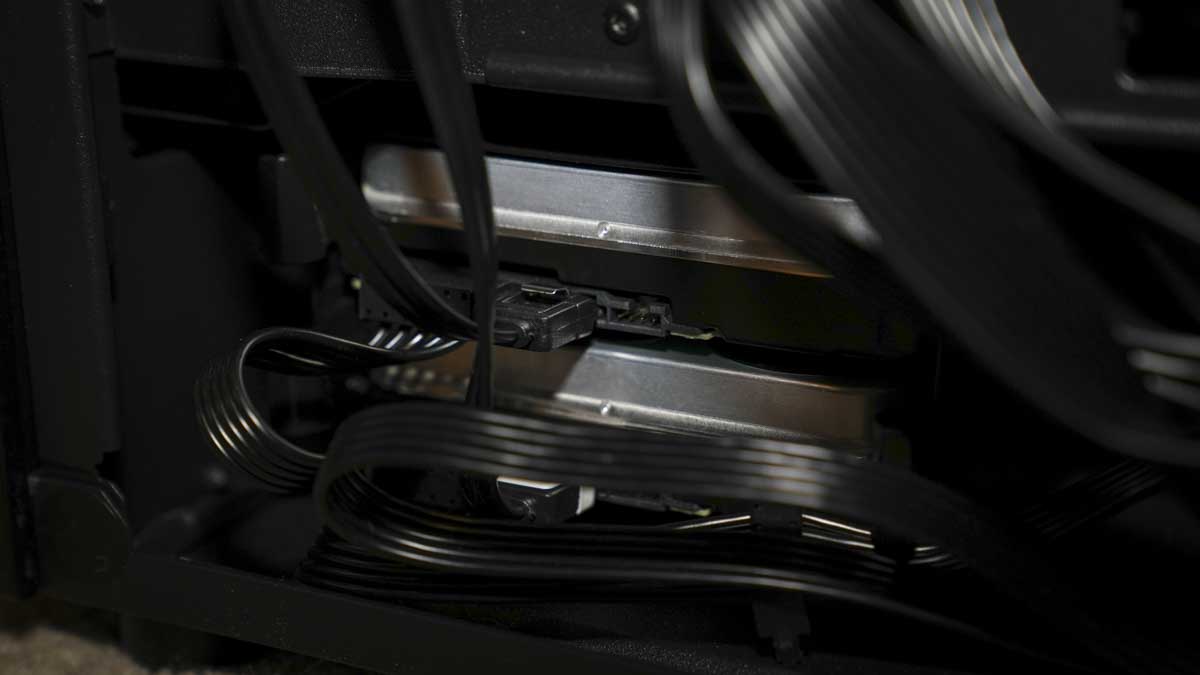
When it comes to testing a hard drive of this nature, it's really designed for enterprise use, and popping it into a workstation allows for a good test using benchmarking software, utilising it to archive and back up external drive data, and performing performance tests. The interesting points about the Exos Mozaic+ M HDD are its overall reliability alongside capacity.
Running a benchmark for three days put the drive under a lot of pressure, and it was able to dissipate the heat relatively well in the Asus ProArt case with ASUS Prime Z890-P and Intel Core Ultra 7. It gave me a good understanding of how it might perform in the long run. Ordinarily, my internal HDDs are WD Reds configured as two 8 TB drives in a RAID 1 array, a very simple but effective solution. Whilst 8 TB drives are perfectly good, I am quickly running out of storage and have another two 8 TB drives stacked with video content, so having a 30 TB drive would take up far less space and could all be contained within my desktop solution.
That's where the key selling point of this HDD comes into play: it's not so much about speed but about reliability and space. The fact that it uses Areal density to store 3 TB of data per platter means you can have a standard 3.5-inch HDD with 30 TB of data. Obviously, that one HDD takes up far less space than my 16 TB backup, a UGREEN NAS, consisting of four 8 TB drives.
When it comes to large-capacity solutions, the Exos Mozaic M is an excellent choice and considering the price, it is exceptionally well-balanced.
Should I buy a Seagate Exos Mozaic+ M 30TB?
Value | Exceptional value for money considering the capacity | 5 |
Design | As it fits into a standard 3.5-inch drive and offers this much storage, there's little to fault about the design | 5 |
Features | As the top model of the Exos Mozaic range, it features prime enterprise use | 5 |
Performance | Compared with SSD drives, performance might seem slow, but you're getting reliability and capacity | 5 |
Overalls | An easy five out of five for this enterprise-level HDD that offers so much in a small package | 5 |
Buy it if...
You need large-capacity storage.
While a single unit can be used as a standard HDD within your desktop machine, it's better to have two in a RAID configuration so that you have a backup, just in case.
You want a neat desktop.
Considering this is a standard 3.5-inch disk with 30 TB of data, it means you can get rid of all those external hard drives and rely on this single option.
Don't buy it if...
You need a large-capacity working drive.
While for an HDD, this is fast, compared with the latest SSDs, it's comparatively slow. It's really designed for archiving and storing data rather than as a working drive.
You need a large drive for gaming.
While the speeds are decent for an HDD, when it comes to gaming, you will need something a little faster, so an SSD should be your first choice.
For more high-capacity storage solutions, we've reviewed the best NAS hard drives and the best NAS devices.
Alastair is a photographer, filmmaker and tech writer who has been working in the publishing industry since the late 1990s. For more than 25 years he has covered photography, video and technology across Future's photography, technology and gaming brands. He runs a photography and video production company and lectures in TV and film. He can usually be found testing mini PCs or prototyping and prop building with the aid of 3D printing.
You must confirm your public display name before commenting
Please logout and then login again, you will then be prompted to enter your display name.
